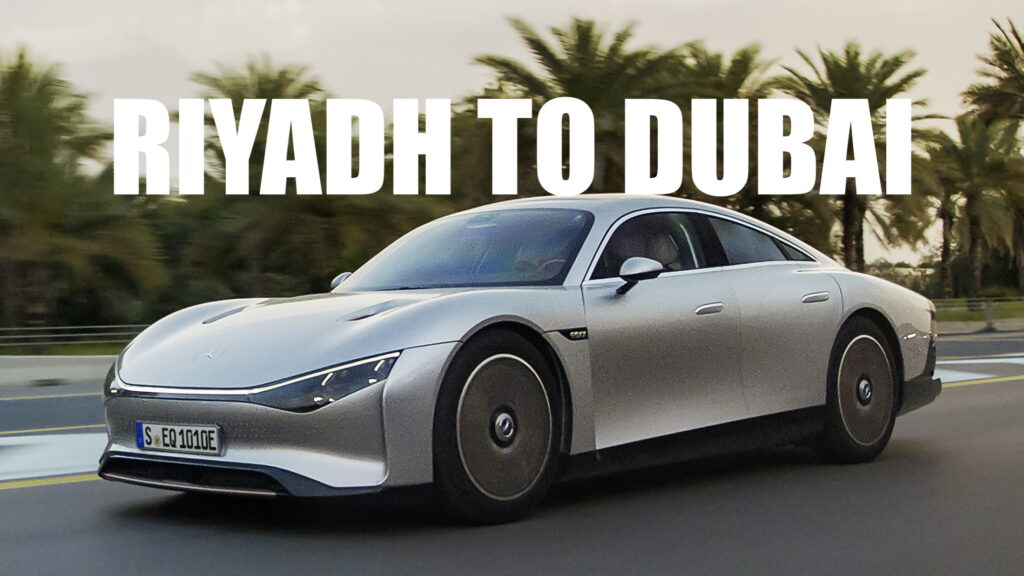Power consumption of 7.4 kWh per 62 miles made this the Mercedes Vision EQXX’s most efficient long-range drive to date
2 hours ago
 –>
–> 
–>
Mercedes has once again sent its electric concept vehicle, the slippery Vision EQXX, on a long-distance drive to test its efficiency. This time, the test occurred on the Arabian Peninsula, and was used to prove that the EV can go the distance, even in the high heat of the desert.
The Vision EQXX made the 627.6-mile (1,010 km) trip from the Mercedes-Benz Center in Riyadh, Saudi Arabia, to the Mercedes-Benz Brand Center in Dubai, UAE, in a total of 14 hours and 42 minutes. Despite temperatures reaching 93 degrees Fahrenheit (34 degrees Celsius), the EV was more efficient than it has ever been, using just 7.4 kWh of energy per 100 km (62 miles). That’s less than the 8.3 kWh/100 km it used on its longest-ever drive, from Germany to England.
That meant that the Vision EQXX’s 100 kWh battery still had 192 miles (309 km) of range left by the time it reached its destination. If conditions had remained stable, the car could have gone nearly 820 miles (1,319 km) in all.

That’s good news for Mercedes’ engineers, because they were tasked with maximizing efficiency for this drive. High temperatures, like the cold, can be a significant drain on EV range, which may be a concern for some consumers. To minimize the heat’s impact on the Vision EQXX, it made use of a heat pump to cool the cabin, which Mercedes claims had nearly no negative impact on range.
To further prevent the ancillaries from sapping power, the test vehicle is also equipped with 117 solar cells. On this drive, they harvested a total of 1.8 kWh of energy, increasing the range by 15 miles (24 km). Mercedes says it is working on getting this feature into its production cars.
The test also helped prove the utility of the company’s intelligent driving assistant. The system offers drivers suggestions about how to drive more efficiently, and it really is smart. In this case, it took things like the crosswinds coming off the coast into account to help the drivers get the most out of the battery. When they stopped, it also helped them find the best parking spot to help maximize solar charging based on the angle of the sun.
“The Vision EQXX continues to provide valuable data for ongoing development of advanced electric efficiency technologies,” said Markus Schafer, Mercedes’ chief technology officer. “As expected, all systems performed perfectly in the desert conditions, handling challenges such as road surface finish and temperature as well as dust with ease. Further proof that electric drive is ready for global markets.”

